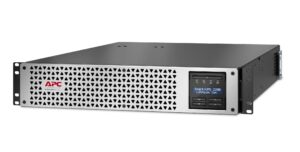It was not long ago when there was a pervasive feeling that everything was moving to the Cloud, an unstoppable, inevitable flow of on-premise IT capacity towards huge, highly centralized service provider data centers. But for many reasons, this hasn’t happened. One big reason has to do with the growing need for compute capacity at the edge of networks, closer to users, be it humans or other machines. Why is this needed? Sending data over a network takes time and costs money…enough so that it is making more sense to deploy compute and storage at the edge rather than having all that data move to and from the cloud or some other remote data center.
Internet of Things (IoT) phenomena
The “Internet of Things” (IoT) phenomena itself is a big driver for needing edge computing capacity as more and more connected devices are generating and collecting data. With the cost of sensors and network connectivity being so low, the volume of data collected by local devices has exploded. Combine that with advances made in data analytics, automation, and artificial intelligence, and this data has become very valuable.
The increasing value of device data is driving this IoT world where everything is connected and continuously collecting data. It’s now making more financial sense to process, clean, and store, at least, some of this data locally than it would be to send it all to a distant data center. Regardless of sensitivity to latency and cost, the fundamental driver for having compute at the edge of the network really comes down to the desire to benefit from digitization. Adding compute and network connectivity to every “thing” and to virtually every aspect of our society is dramatically impacting society’s productivity, efficiency, and wellbeing. Compute everywhere is our future.

“Compute everywhere”
This “compute everywhere” trend has led us to a hybrid computing architecture where more and more organizations’ IT assets and data are spread across large, centralized data centers, smaller regional data centers and very small local edge sites. This highly distributed environment creates challenges for those deploying and managing the IT infrastructure. And this complexity is exacerbated when you consider that each of the local edge sites require high availability to ensure uninterrupted operations and service. As IoT technologies and edge computing applications become a more integral part of the day-to-day business and/or customer experience, the edge IT infrastructure that houses the associated distributed IT equipment must be robust. The role of IT is no longer viewed as a cost center, rather it is tightly connected to the business strategy and to profit as a value creator, making resiliency even more imperative.
Local edge environment attributes
There are two unique attributes of local edge environments, in contrast with regional edge or centralized data centers, that make it challenging to achieve the necessary resiliency: (1) lack of IT and/or facilities staff on-site, and (2) having many sites, geographically dispersed. These two things create issues such as:
- Complexity in selecting and configuring IT infrastructure components: mistakes can propagate across sites, you must choose parts that not only support the application but that also are compatible with the other parts and with each site’s local conditions
- Logistical/workforce challenges of deploying IT infrastructure to each site
- Operating and maintaining multiple sites from afar: having visibility to all sites and assets, troubleshooting problems without local trained staff, maintaining everything in a standardized efficient way, interpreting alarms and status notifications, knowing who is accessing the equipment, and so on.
Mitigating these challenges starts with partnering with a collaborative ecosystem of vendors, integrators, and service providers. Together using their expertise and tools, they can address configuration, integration, delivery, and operations/maintenance challenges. IT vendors should drive easy interoperability through reference designs, selectors, APIs, and certification programs.
Effective physical infrastructure vendors (racks, UPS, cooling, etc) simplify deployment & operations through easy-to-use configurators, reference designs, resilient infrastructure, and software management tools. Systems integrators will add tremendous value through the complete integration of your IT hardware, software, and physical infrastructure systems ideally before delivery to the site. And, finally, managed service providers (MSPs) will operate & maintain edge infrastructure for you through management tools and digital services provided either by themselves or by the infrastructure vendor.
Software management to solve edge challenges
Software management is a critical part of the solution to solve edge challenges. The tools are necessary for giving visibility and control from afar. New cloud-based software suites have emerged that offer open APIs and take advantage of cloud, IoT, data analytics, and artificial intelligence technologies. These new tools are what connect members of the ecosystem together to the operations phase of edge IT deployments. These new capabilities along with the MSPs who employ them essentially augment staffing for the end user by providing remote visibility and proactive control over all edge IT assets.
To paint the picture in very broad strokes, the ecosystem works together to simplify the design and deployment phases while providing both a physical and virtual workforce to ease management and maintenance burdens. By working together, edge computing owners and operators will be capable of not just surviving in our new complex world of “compute everywhere” but should be well-positioned to thrive in whatever ways they serve their customers. To learn more about mitigating edge challenges through this integrated ecosystem, download our white paper “Integration isn’t just for the micro data center”.
Article originally featured in DCD Edge Supplement.



